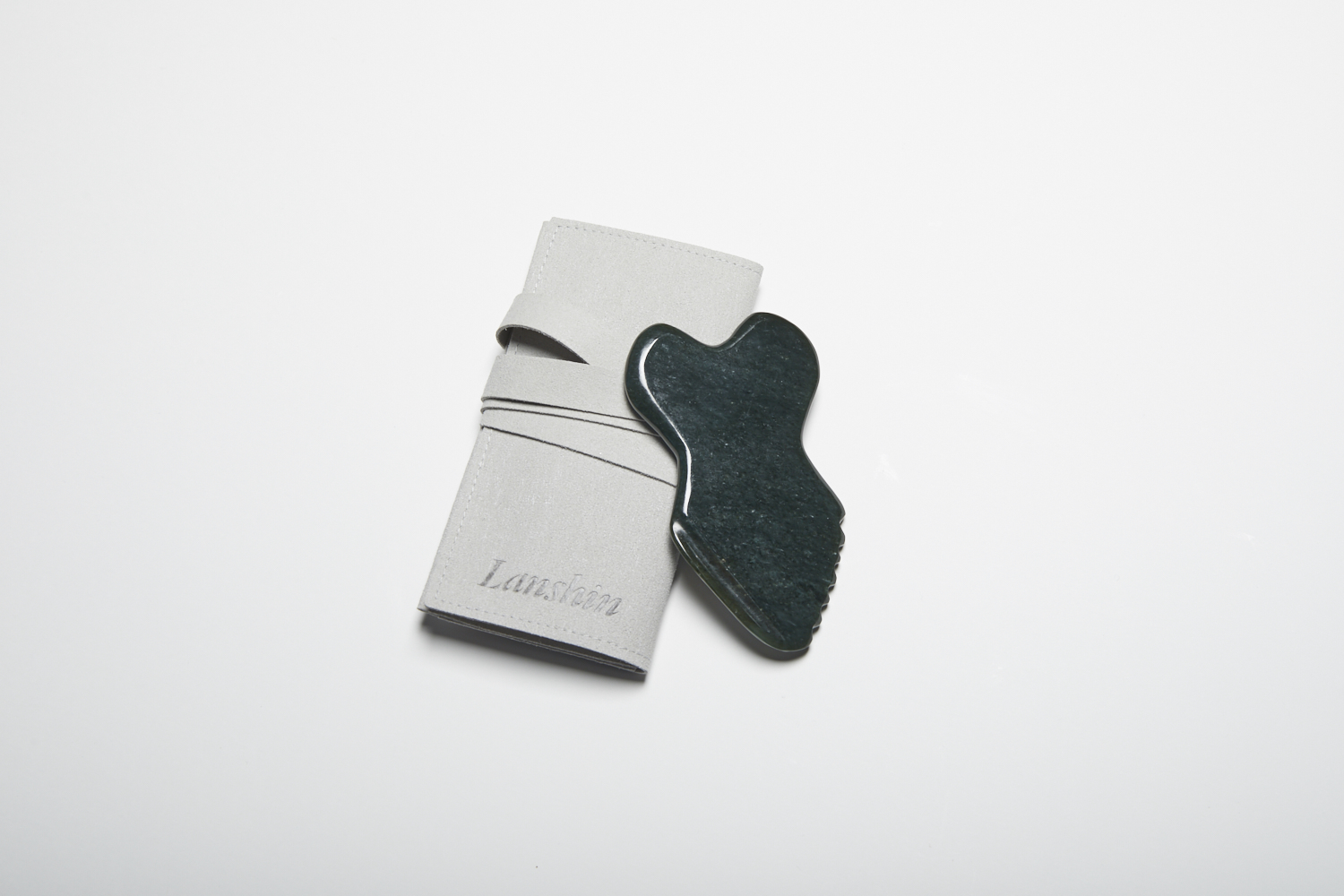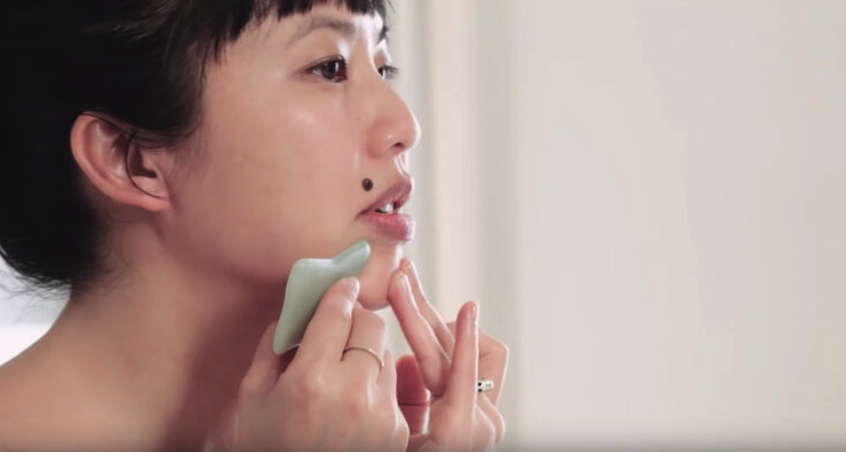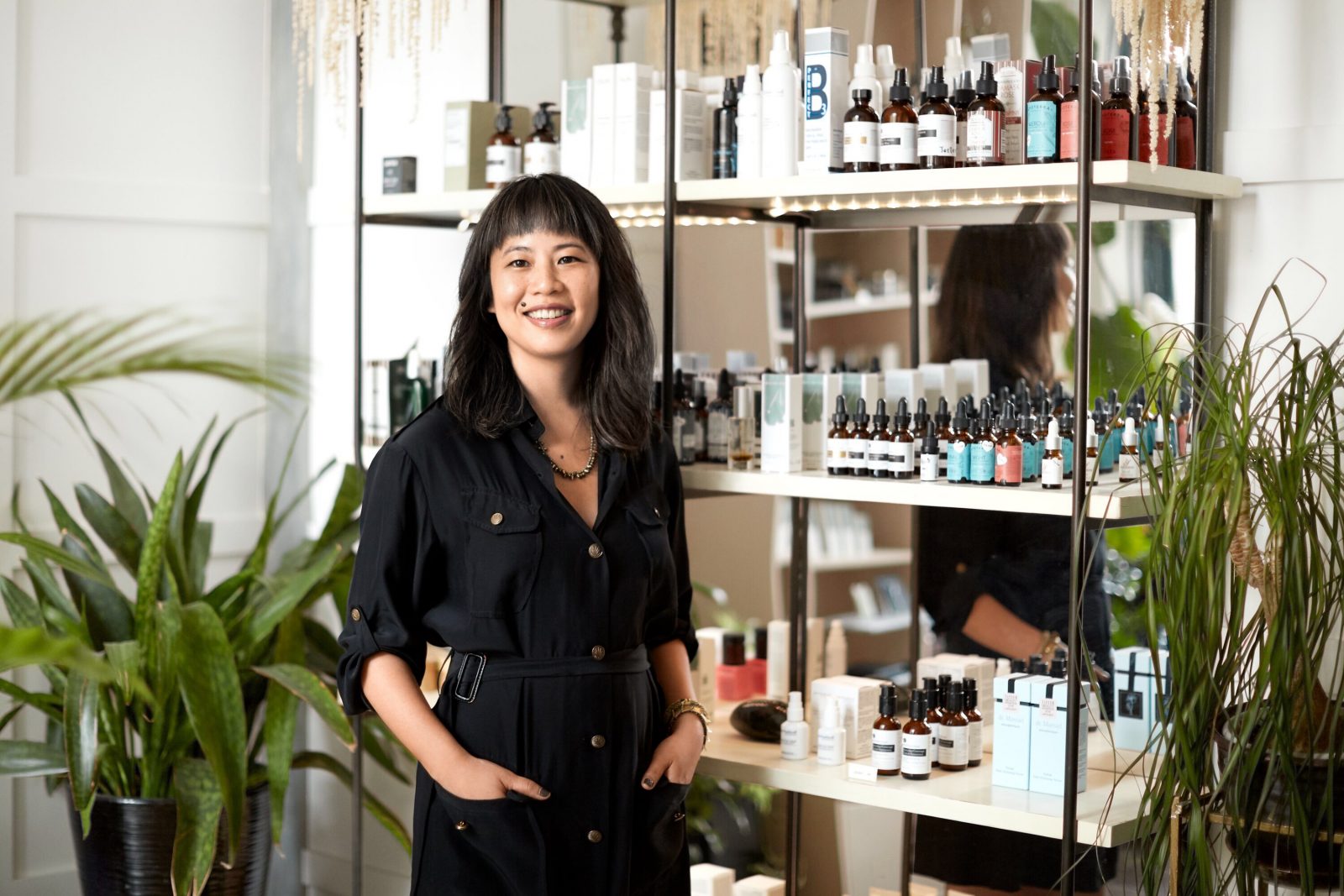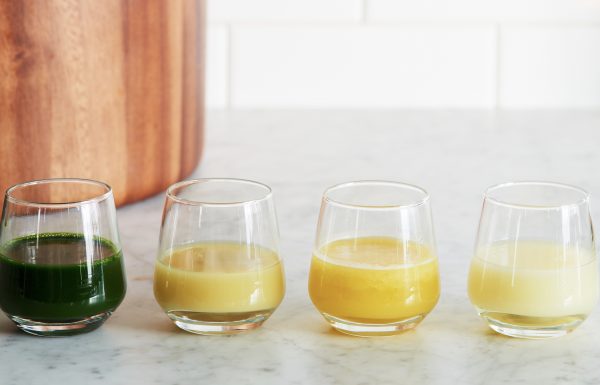Facial massage tools are having a moment. And the now-famous Gua Sha (pronounced gwā sā) seems to be front and center. How do you know if you’re doing it correctly? What results can one expect? What are the best techniques? This is something we hear regularly from friends and customers. Seems like every brand is coming out with a new facial massage tool. I’ve tried too many to count. Most often, the rollers would break after a few uses and the so-called “jade” stones weren’t actually made of jade. I almost gave up until I discovered Lanshin. With a background in Chinese Medicine, Sandra Lanshin Chiu, L.Ac. is a licensed acupuncturist, herbalist, and founder of her namesake Gua Sha tool, Lanshin– a.k.a the reigning Gua Sha expert. So, I sat down with Sandra to help demystify the practice of Gua Sha and hear the tips and tricks she uses with her clients every day.
How did you get started in Traditional Chinese Medicine (TCM) and why do you love practicing it with your clients?
In TCM we have many methods of restoring health and balance, including acupuncture, herbal medicine, cupping, moxibustion, qi gong, tai qi, and more. I love practicing all modalities of TCM, and I find that Gua Sha is a particularly effective, rapid way to restore and invigorate healthy circulation. According to TCM, illness and disease are caused by chronic tension that obstructs healthy circulation, or the impact of stress in our lives. Gua Sha helps relieve that so that we can feel better, more like ourselves again.
As a Chinese-American, my informal “education” began in childhood as I watched and learned from my grandmother and mom prepare home remedies for various ailments. Much later on, after leaving the corporate world of investment banking, I began my formal Traditional Chinese Medicine education (including Gua Sha) by studying for a Masters degree in traditional Chinese medicine (MSTOM) at PCHS (4 years), an apprenticeship in Beijing with Dr. Wang Jiu-Yi (1.5 years), Master Yang Fu-Kui (3 years), Dr. Ning Ma (2 years), Facial Gua Sha CEU (continuing education) with Dr. Ping Zhang (1/2 day workshop), and Dermatology certification with Mazin Al-Khafaji (1 year).
Tell us a little bit about the Gua Sha tool and why we should be incorporating it into our beauty routines?
- Gua Sha is an ancient Chinese Medicine practice that goes back centuries, (some records suggest it dates back to the Paleolithic era). It was used to treat pain, and even illnesses as serious as cholera. Today, Gua Sha remains an important modality that TCM practitioners use to treat pain and boost immune function.
- Facial Gua Sha is a relatively new “cosmetic” treatment derived from traditional Gua Sha. For facial Gua Sha, we use a smooth tool (often jade or quartz), to slowly stroke the face and neck, improving circulation and releasing tension.
- While Gua Sha is traditionally more aggressive, facial Gua Sha uses a much, much slower speed and softer touch. Pressure varies depending on the area of the face or neck, but I recommend light to medium pressure, and always feather-light around the eyes. The face really responds to a “less is more” approach.

You’ve designed a few tools of your own. What makes them unique and why does the shape matter?
- I bought every Gua Sha tool I could find in the US and China and used them on myself and my patients. (I still have a massive box with over 100 tools!) But there was no single tool that was able to help me achieve the results I was looking for. I had to (literally) juggle multiple tools to create the results I knew were possible.
- That’s what led me to design (and patent) the Lanshin Pro tool, often referred to as the “Swiss Army knife of Gua Sha,” because it’s an all-in-one solution. It has multiple edges that allow you to apply different techniques within one treatment. I chose nephrite (jade) for its strength and scientifically proven ability to emit FIR heat energy.

For newbies out there, what are some beginner tips to getting started with a Gua Sha tool? What’s the best way to incorporate oils and mists too?
- I recommend practicing facial Gua Sha as often as every day (or at least 3 times a week) to maintain results.
- The best time to practice facial Gua Sha is whenever works for you. Some people prefer to do it in the morning, others enjoy it before going to sleep. (It pairs well with Netflix.) A quick facial Gua Sha session is my favorite way to prep before putting on makeup.
- To prep your skin, always start with a clean face. I recommend using a hydrating mist (or alcohol-free toner) followed by facial oil (or moisturizer or cream, if you prefer) to get the necessary “glide.” If you use a moisturizer remember to reapply every 3-4 mins (before your tool starts to drag or skin becomes red) in order to avoid too much friction or discomfort.
- For those who don’t have sensitive or easily reactive skin, my hydration method is demonstrated here
- If you’re feeling intimidated or don’t know where to start, check out my free tutorial videos. If you follow along 2-3 times it‘ll take 20 minutes to learn my technique and routine. It’s pretty simple and repetitive, so once you learn these basic steps it takes about 10 minutes.

What results can you expect after consistently practicing?
- Facial Gua Sha stimulates and improves circulation of blood, lymph (fluid), and energy (qi) in the skin and underlying tissue. In TCM, a constant flow of circulation is what makes your body healthy and gives skin that glow… This creates immediate visible results as well as long-term changes: reduced puffiness, smoother complexion, softened lines, reduced sagging, sculpted and lifted facial features, added volume to sunken features (this is an amazing benefit for mature skin) and it can even help acne heal faster.
- Facial Gua Sha is also wonderful for releasing built-up tension and knots in the face, neck, and shoulders. Many of the benefits are immediate so it’s an ideal technique that can relieve headaches, sinus congestion, or a tight/painful jaw (e.g. TMJ).
- Facial Gua Sha is intended to invigorate healthy circulation, so I look at it as a health practice that has cosmetic “side effects” like glowing skin and softened lines.
- Note: Always avoid open skin, sunburn, and acute flare-ups of inflammatory skin conditions (like eczema). If you picked pimples, avoid them or you can cover them with a hydrocolloid “pimple patch.”
What’s one thing you wish everyone knew about Gua Sha?
- The spread of misinformation risks degrading the efficacy and validity of facial Gua Sha. When brands or skincare influencers make claims or provide uninformed guidance, it leads to disappointed consumers who then question the credibility and safety of facial Gua Sha and TCM. (For example, Gua Sha isn’t a lymphatic drainage technique and has not been proven to reduce cellulite.)
- To practice facial Gua Sha safely and effectively, I can’t stress how important it is to learn from a TCM practitioner (“L.Ac.” next to their name means Licensed Acupuncturist). If you learn facial Gua Sha outside of the TCM profession, it’s likely that what you learn will be inaccurate (or not really Gua Sha at all).
Lanshin Gua Sha tools are now available exclusively in Nashville at Lemon Laine






